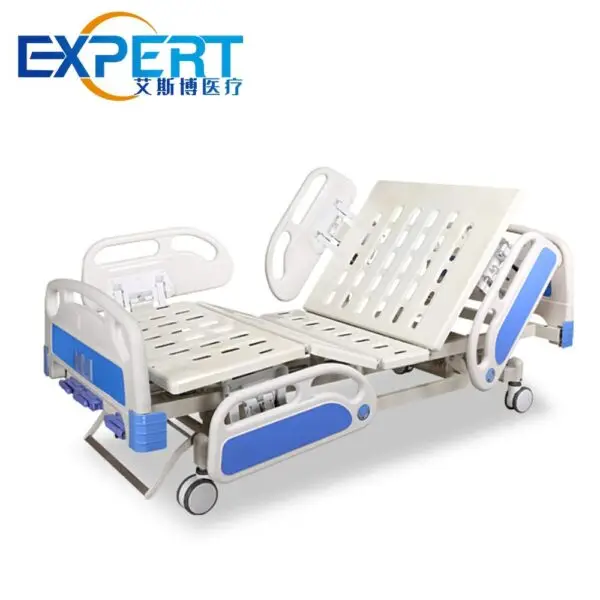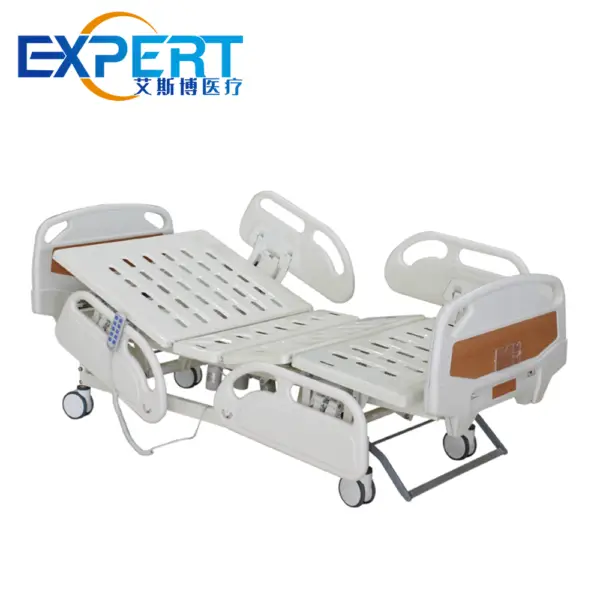عنوان
304 شارع الكاردينال الشمالي
مركز دورتشستر ، ماساتشوستس 02124
ساعات العمل
من الاثنين إلى الجمعة: 7 صباحًا - 7 مساءً
عطلة نهاية الأسبوع: 10 صباحًا - 5 مساءً
عنوان
304 شارع الكاردينال الشمالي
مركز دورتشستر ، ماساتشوستس 02124
ساعات العمل
من الاثنين إلى الجمعة: 7 صباحًا - 7 مساءً
عطلة نهاية الأسبوع: 10 صباحًا - 5 مساءً

Hospital bed equipment is an indispensable tool in modern healthcare.
قبل أن نتعمق في المحتوى، أود منك الانضمام إليّ على منصات التواصل الاجتماعي الخاصة بي حيث أشارك المزيد من الأفكار وأتفاعل مع المجتمع وأنشر التحديثات. إليك كيفية التواصل معي:
فيسبوك:https://www.facebook.com/profile.php?id=100071234835011
لينكدإن:https://www.linkedin.com/company/74943205/admin/dashboard/
يوتيوب:www.youtube.com/@shandongexpertmedicalequip4695
تيك توك:www.tiktok.com/@expertmedical
الآن، لنبدأ رحلتنا معًا. أتمنى أن تجد المحتوى هنا مفيدًا وجذابًا وقيمًا.

Hospital bed equipment is an indispensable tool in modern healthcare. It provides comfort, support, and safety to patients, especially those who are immobile or have limited mobility. However, to ensure optimal performance and longevity, regular and thorough maintenance is essential. This blog post will delve into the intricacies of hospital bed equipment maintenance, covering essential cleaning practices, routine inspections, troubleshooting common issues, and preventive measures to minimize downtime and maximize patient safety.
Before diving into maintenance tips, it’s crucial to have a solid understanding of the diverse range of hospital bed equipment. These devices are designed to cater to various patient needs, from general care to specialized medical conditions. Common types of hospital bed equipment include:
A comprehensive understanding of the specific features and functions of each type of hospital bed equipment is vital for effective maintenance.
Daily cleaning and disinfection are the cornerstones of hospital bed equipment maintenance. By adhering to a rigorous cleaning regimen, healthcare facilities can significantly reduce the risk of healthcare-associated infections and promote a hygienic environment for patients. Here’s a step-by-step guide to daily cleaning:









Regular inspections are crucial for identifying potential issues early on and preventing costly repairs and equipment downtime. Implement a routine inspection schedule to assess the condition of your hospital bed equipment. Key areas to inspect include:
Proper lubrication is essential for maintaining the smooth operation of moving parts in hospital bed equipment. Use a hospital-grade lubricant to lubricate hinges, casters, and other moving components. Avoid using excessive amounts of lubricant, as this can attract dirt and debris.
Bedsores, also known as pressure ulcers, are a significant concern for bedridden patients. To prevent the development of bedsores, implement the following strategies:
Hospital bed equipment may experience various issues over time. Here are some common problems and their potential solutions:

| عنصر | نصائح الصيانة |
|---|---|
| فراش | Regularly inspect for tears, stains, and sagging. Clean with a hospital-grade disinfectant. Replace as needed. |
| القضبان الجانبية | Check for proper functioning and secure attachment. Clean with a disinfectant. Replace any damaged or worn-out side rails. |
| عجلات | Inspect for wear and tear. Lubricate regularly. Replace any damaged casters. |
| لوحة التحكم | Clean with a disinfectant. Check for any damage to buttons or switches. Replace faulty components. |
| Hydraulic and Pneumatic Systems | Monitor for leaks, slow response times, or unusual noises. Have a technician inspect and repair as needed. |
By implementing a comprehensive معدات سرير المستشفى maintenance program, healthcare facilities can significantly improve patient safety, comfort, and overall care quality. Regular cleaning, inspections, and preventive maintenance are essential for ensuring the optimal performance and longevity of these vital medical devices. By investing in proper maintenance, healthcare providers can minimize downtime, reduce repair costs, and create a safer environment for patients.
كم مرة يجب معدات سرير المستشفى be inspected?
Hospital bed equipment should be inspected at least monthly, or more frequently in high-use areas.
What type of disinfectant should be used?
A hospital-grade disinfectant that is effective against a broad spectrum of microorganisms should be used.
Can I use household cleaners to clean معدات سرير المستشفى?
Household cleaners may not be strong enough to kill all the germs present in a hospital setting. It is recommended to use hospital-grade disinfectants.
How often should mattresses be replaced?
The lifespan of a mattress depends on factors such as usage, patient weight, and maintenance. Generally, mattresses should be replaced every 5-7 years.
What is the importance of staff training in معدات سرير المستشفى maintenance?
Staff training is crucial for ensuring that all staff members understand the importance of proper maintenance and can perform routine cleaning and inspection tasks effectively.